As some of you will remember from early February, I have already posted about the plum blossom season in Japan. Now that we’re at the start of April, the cherry blossom season is with us. It’s blissful, and I hope you are enjoying
’s wonderful Sakura diaries.I have some photos and some classic Japanese art related to the cherry season for you today. But the essay I planned in celebration of the Sakura tradition in Japan didn’t quite work out as planned. The cherry trees, doubtless knowing what’s best for me, nudged me towards a slightly different journey.
🌸
It’s a bit after 6 a.m., and I’m out walking in a local park. I often come here, but today my mission is to keep an eye on the development of the 桜 (Sakura), the cherry blossom. A light rain is falling. Already, there are a few people out exercising. I wander through the familiar landscape and see trees which hadn’t before caught my attention, now tinged with early blossoms of varying shades. Especially lovely now are the trees whose white petals are surrounded by green leaves, giving a wonderful greenish hue to their trees in the rain. These are probably Kasumizakura, one of the hundreds of kinds of endemic and hybrid species of cherry tree in Japan.
Amid the delight of seeing the cherry blossoms on this mild and damp morning with so few people around, I feel the need to indulge in moments of reflection on a life spent travelling—a mix of melancholy and delight.
The brief, beautiful lives of the Sakura are commonly seen as emblematic of the beauty and transience of our lives and of the recurrence of the seasons, as this pattern is repeated year after year. So as I walk, it’s hard not to think back on my life of travel and living around the world, on so many beginnings and endings, so many arrivals and departures. My own life has followed a pattern almost as restless as the blossoms on the cherry trees around me.
🌸
I wrote before that viewing the plum blossom predates the interest in the cherry blossom. However, by the time of the Heian era, the practice of 花見, hanami, or flower viewing had come to mean viewing the cherry blossoms. It has been the practice for centuries to sit beneath the white or pink canopy of petals and admire their beauty. The great classic work of the Heian period, The Tales of Genji (early 11th CE), contains dozens of mentions of it. One such quote is:
“Ah, cherry blossoms! How one's heart trembles for them when stormy winds blow, although anyone can see they themselves care not at all.”
My heart also trembled when a spring hailstorm raged recently in Tokyo. But the spring winds are a natural part of the change of seasons. The arrival of the first stormy wind of spring - 春一番 haru ichiban (“spring’s first"), is generally greeted with a knowing look by residents. They know there will be a second, a third, and more.
The delicate cherry blossom has to contend with all this but is perceived to do so with indifference. This carelessness of the petal towards their fate seems to have a direct link with bushido, “The Way of the Warrior," which was a code of conduct for the samurai. The principles of bushido were not collected in one document but were often contained in stories. Among other things, bushido means sacrificing one's life for one's master at any time, and the graceful falling of cherry blossoms was seen as a symbol of this. It’s a way of dying without regret, which translates, for me, into a way of living without regret, perhaps without the burden of the past, which for me is impossible.
🌸
I saw two elementary schoolchildren taking photos with their parents under some cherry blossom early one morning. They looked proud of their new uniforms and shiny school bags. It was a reminder that one way in which the cherry blossom season forms an intimate part of Japanese life is that their season coincides with the end and the beginning of the new academic year, which ends in March and begins in April. Schools have roughly a two-week spring break, so for children, the cherry blossom can be associated with both finishing an academic year and starting the next. It’s hard for them not to be aware of this; generally, every school seems to have at least one cherry tree. The blossom may not be on the curriculum, but it’s part of school life here.
🌸
The day before my visit to the park, I’d visited the site of an old castle in my neighbourhood, which these days boasts its own fine array of cherry trees. The original site of the castle is now just a gaping expanse of grass; beyond a few indentations in the ground, there’s only a wooden sign that tells you what was once there. The structure was probably razed at the end of the 16th century. It belonged to supporters of the Hojo clan, who were defeated by Toyotomi Hideyoshi, one of the unifiers of Japan. This unification led to the beginning of the long Tokugawa shogunate, a period of relative peace and stability that lasted for over 250 years. But this is a site of erasure. We know that history belongs to the victors, and the losers here had their castle wiped from the earth. Walking under the nearby cherry blossoms, I wondered if the fighters on the losing side, faithful to their lord and to their cause until the end, died, like the petals, without regret.
🌸
Below the site of the former castle, I passed by some sloping woodland, and at the bottom of the slope, there was what looked like a long, vivid river of green dotted with tiny points of light. They were anemone flaccida, a perennial that’s native to East Asia and at risk of disappearing in some parts of Japan. This spring ephemeral is called 二輪草 or Nirinsou here. It flowers for about two weeks and will spend most of the rest of the year underground. This beautiful plant is the “symbol” flower of my part of Tokyo, where it still thrives in the woodland park near the abandoned castle. I gazed upon them, weighing their delicate, beautiful resilience against the cycles of human history I’d been considering moments earlier.1
🌸
Back in the park with the cherry blossom on that rainy morning, my thoughts were interrupted by a beautiful sound. It was the song of the uguisu, 鴬, the Japanese bush warbler, which used to be called the “Japanese Nightingale.” If you visit Nijo Castle in Kyoto, you’ll find the “nightingale floors” (uguisubari - 鴬張り), which make a sound like the call of a “uguisu” or bush warbler. These were designed to protect the Shogun and his warriors from intruders.
My thoughts returned to the abandoned castle. And the opening lines from TS Eliot’s East Coker came to mind:
In my beginning is my end. In succession
Houses rise and fall, crumble, are extended,
Are removed, destroyed, restored, or in their place
Is an open field, or a factory, or a by-pass.
🌸
Spring really is a time of endings and beginnings in Japan, I thought. There’s the brave, thoughtless beauty of the cherry blossom, born into glory and dying without regret. There’s the brief, exquisite rise and fall of the anemone flaccida, unseen by most of the locals and tourists out to enjoy the Sakura. There is a human cycle of learning—the start and finish of the school year—that links to the cherry blossom and leaves its impression on every child in the country. And, as I reflected that morning, after all my years of travel around the world, perhaps I’d reached the end of my own wanderings and was finally beginning a new life.
🌸
As I turn to leave the park, the rain falls harder. Behind me, I know more petals will be falling as the raindrops dislodge them. I don’t look back, but I imagine them turning on their axes in the spring breeze, swirling like weightless sensations of hope in the heart. They will keep falling, and I will keep walking. They will return to bloom again, and I will be back.
I was interested to find out that the word anemone comes from the Greek word for wind, anemos.


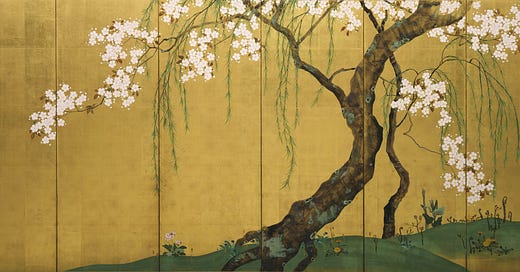



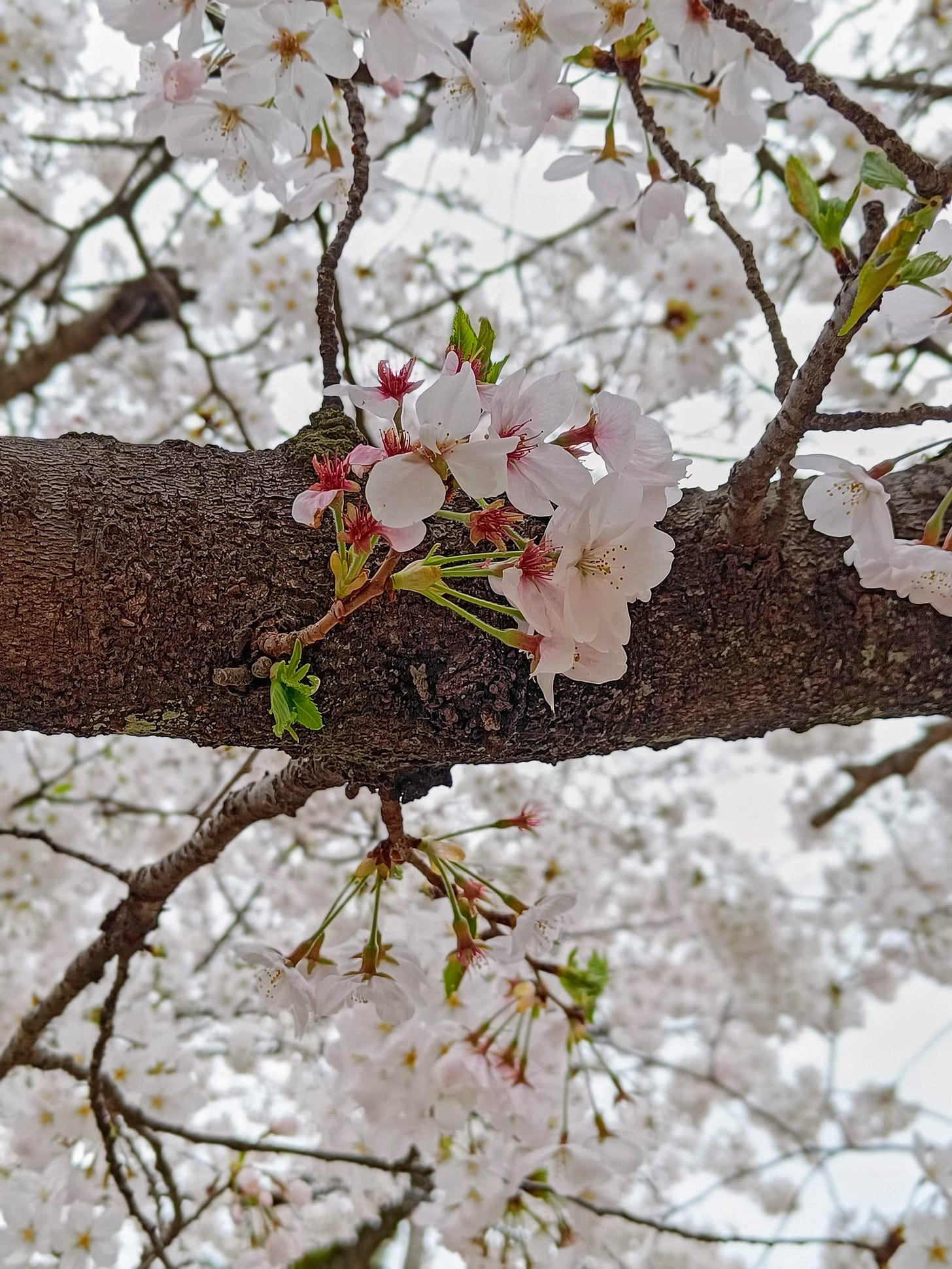
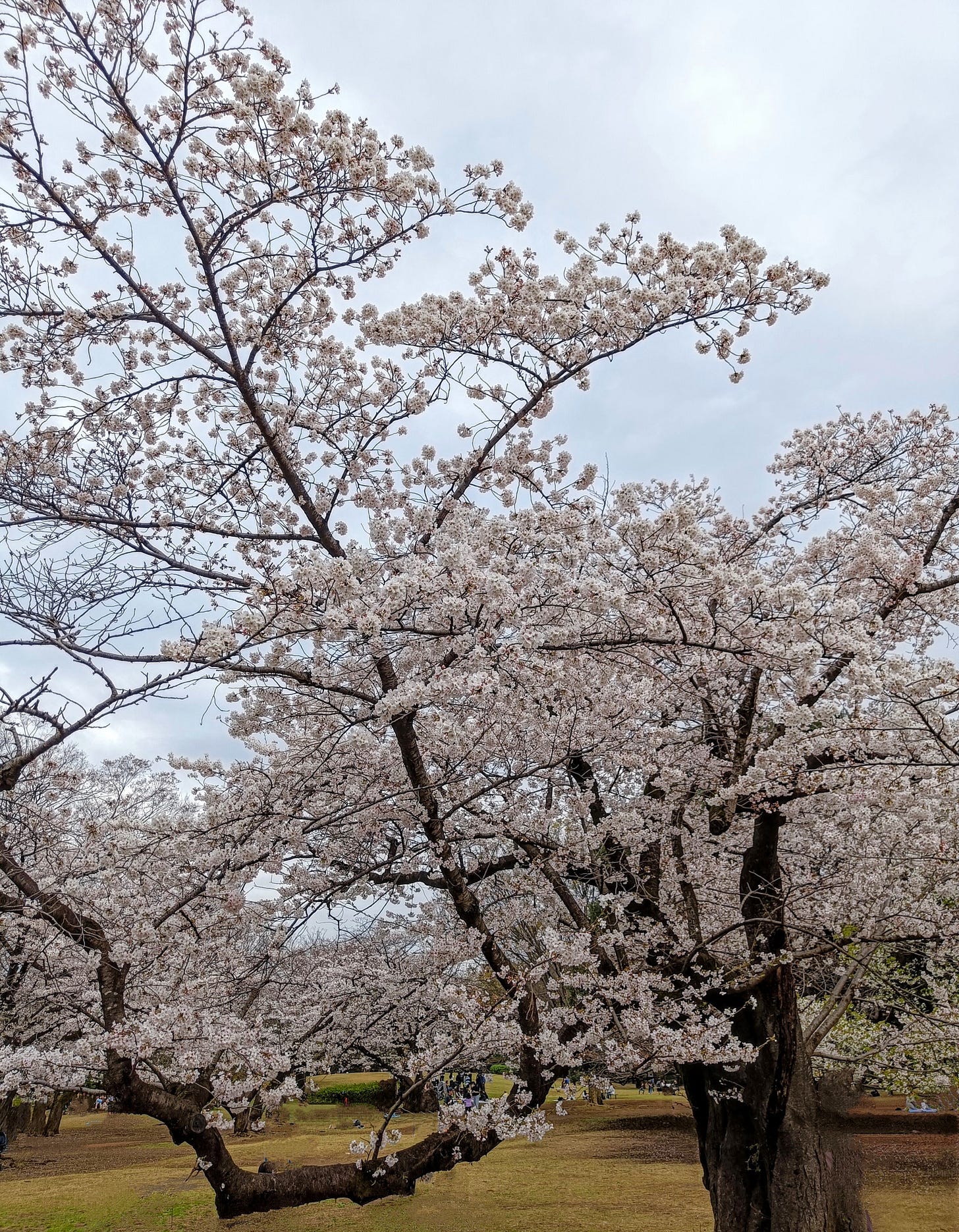
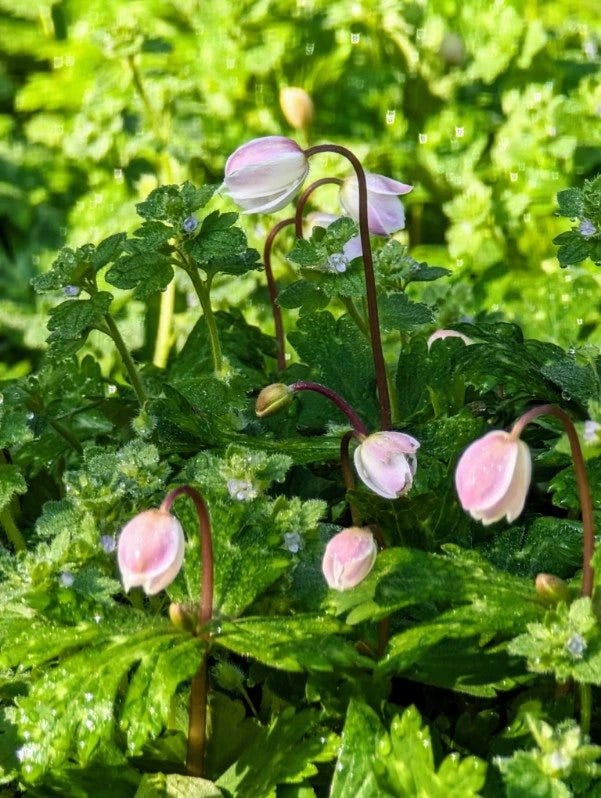
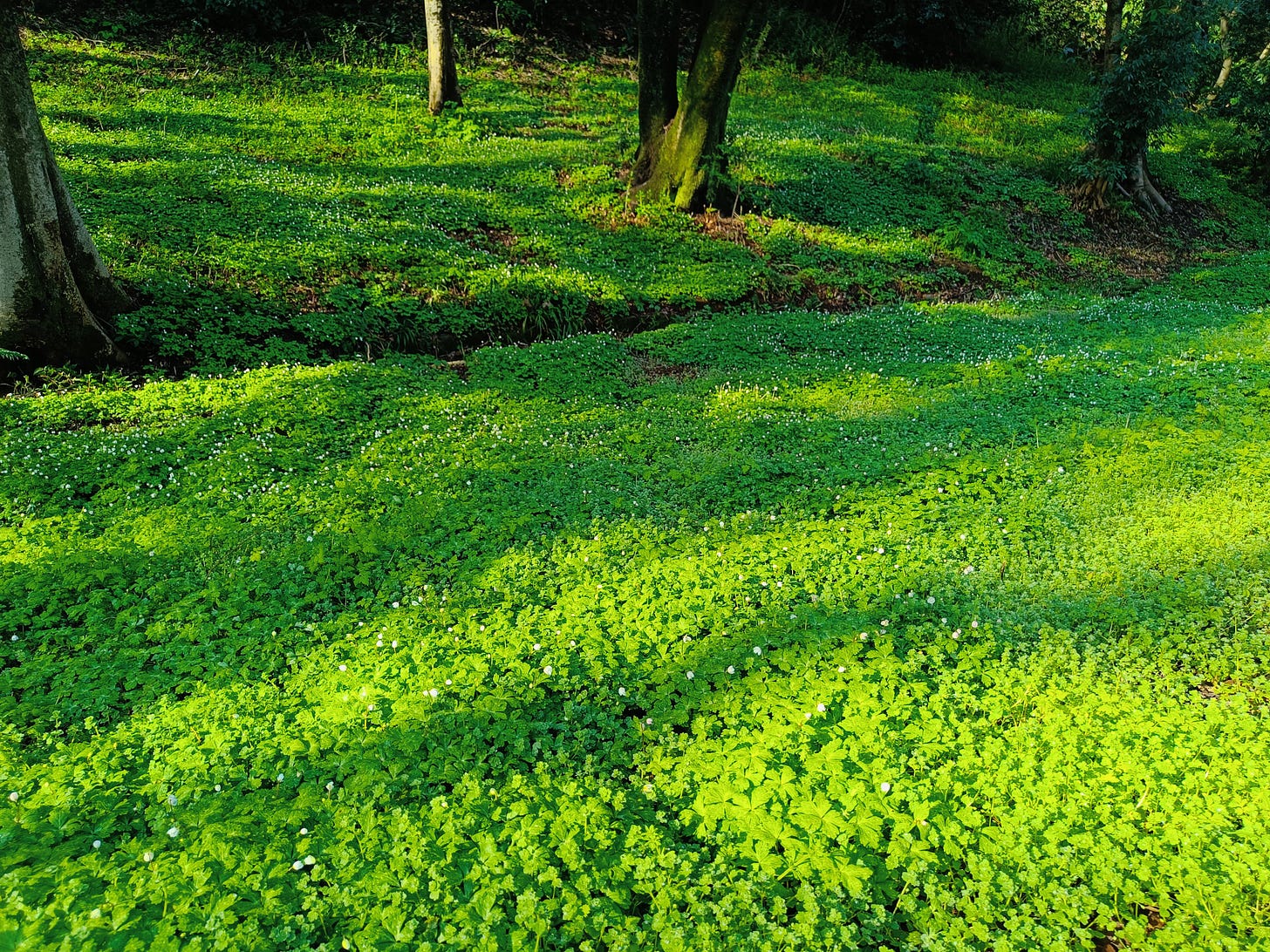
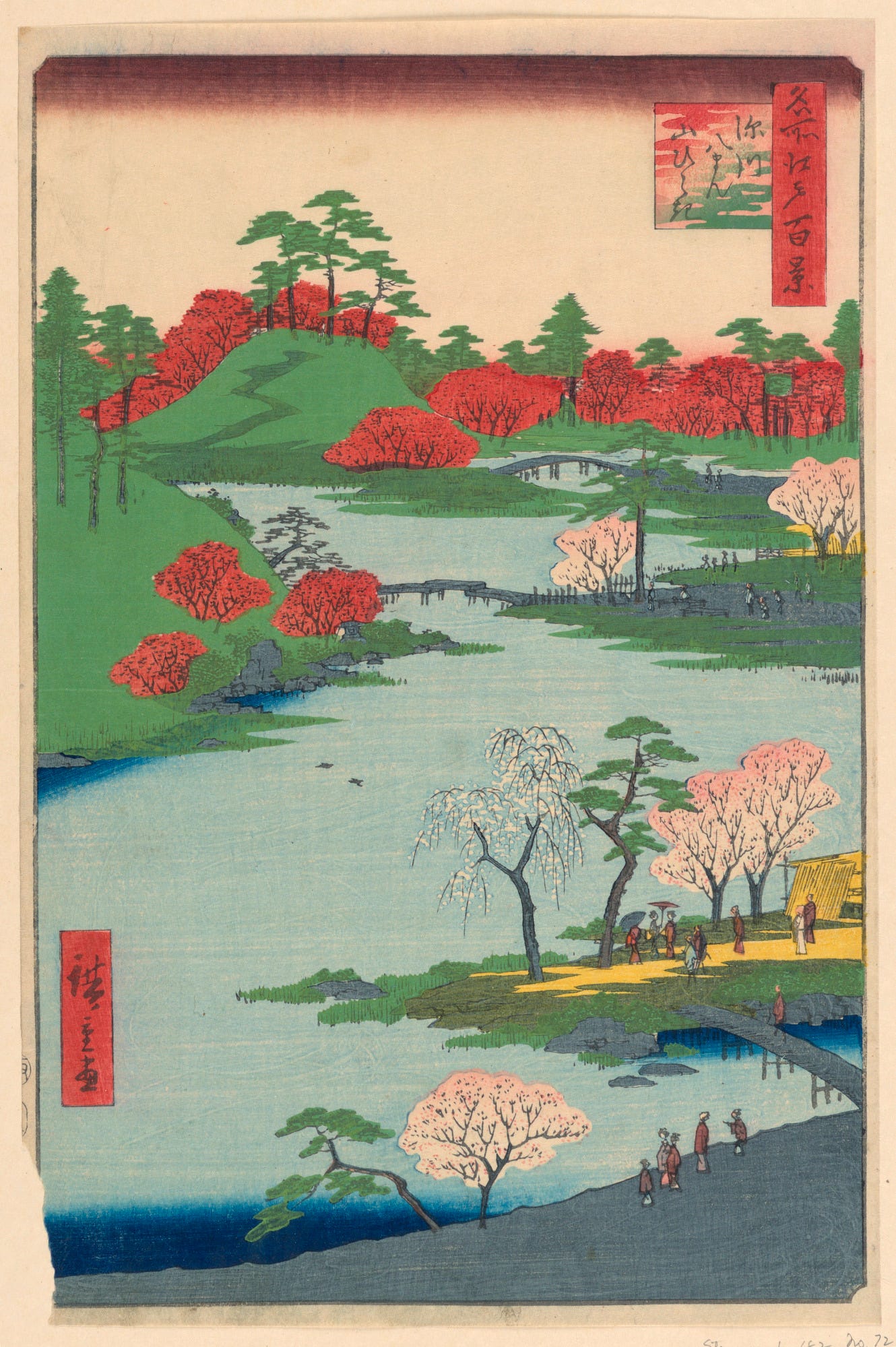
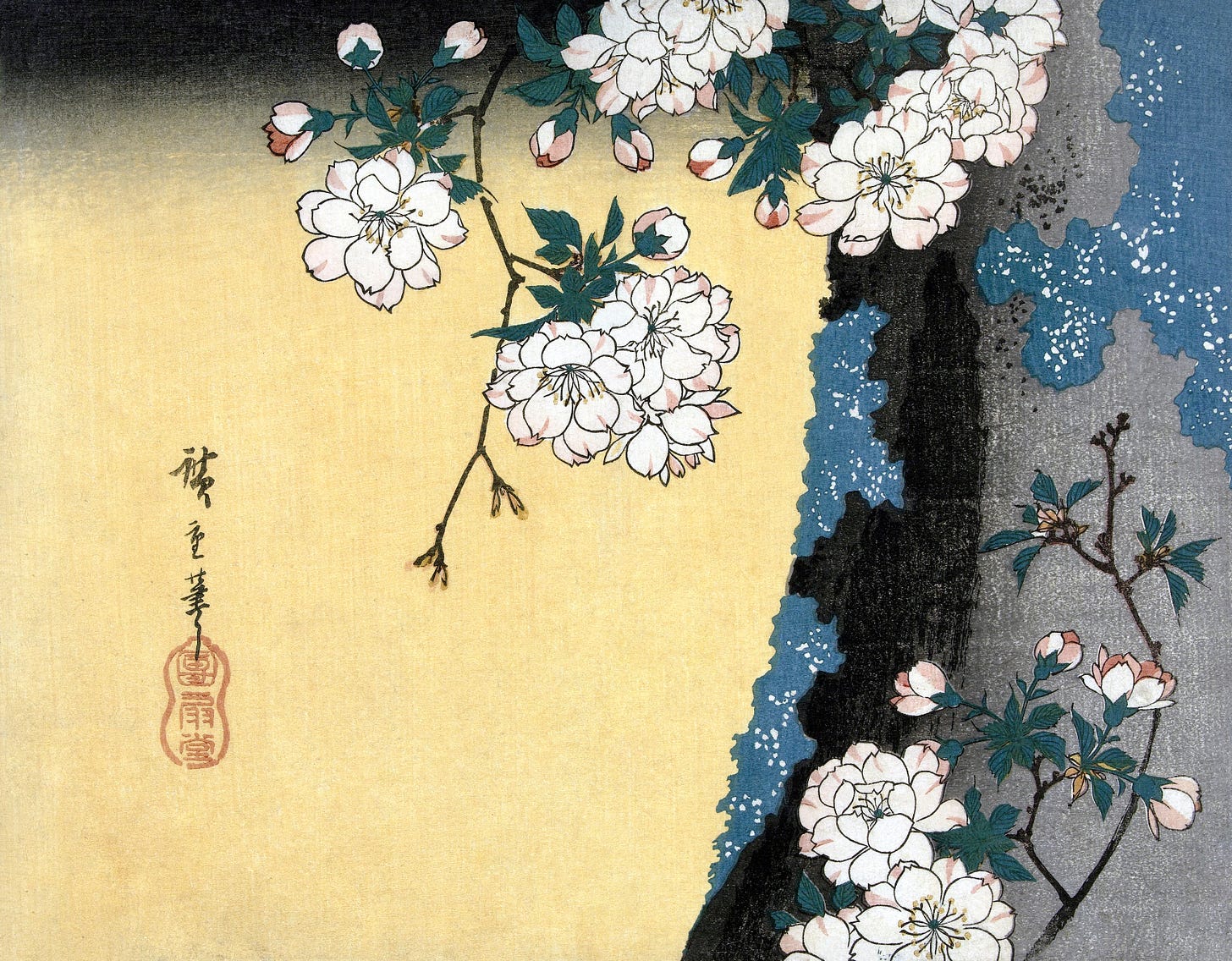
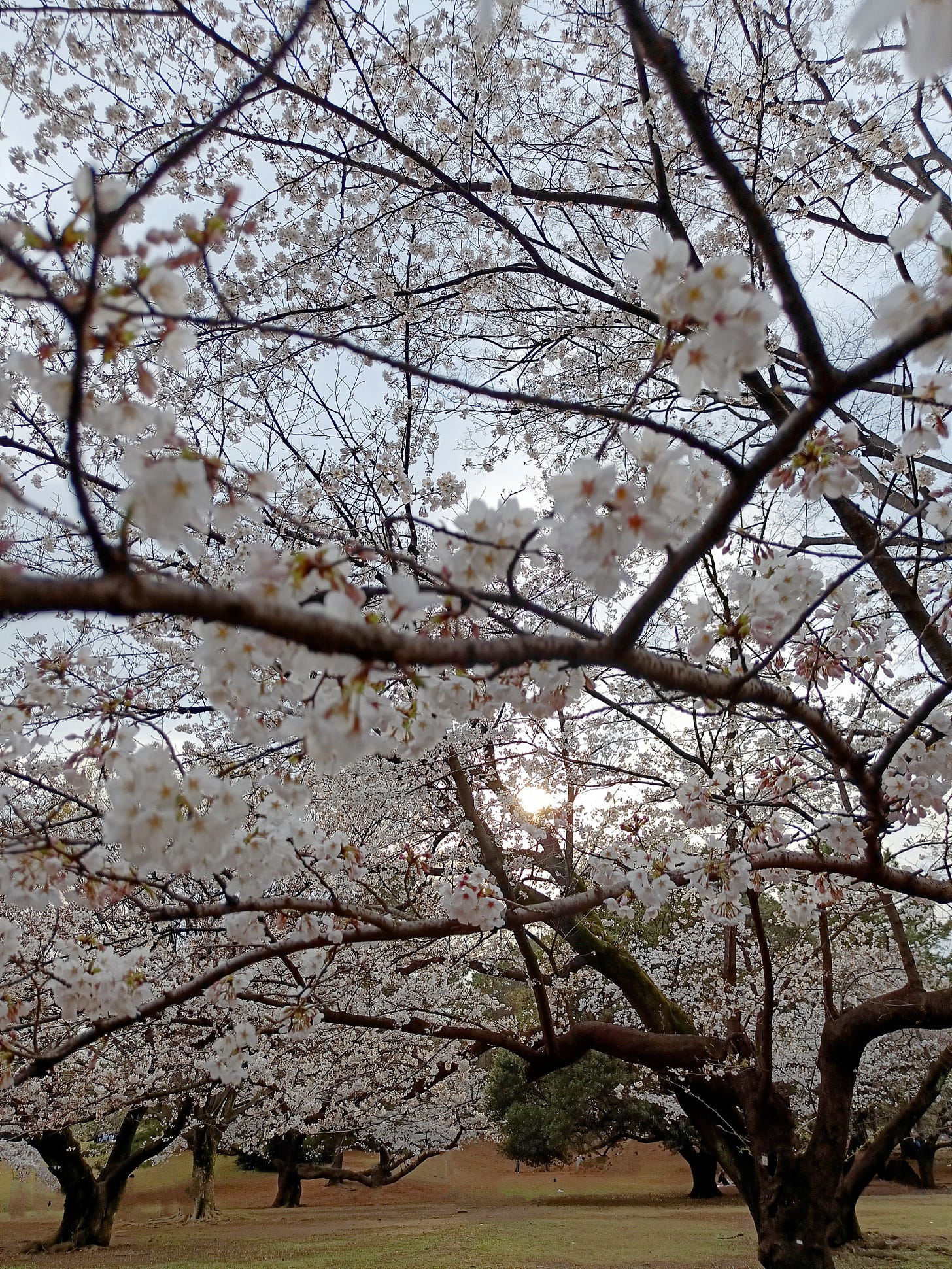

That you know the cherry blossoms doubtless know what's best for you epitomizes why I love coming to know you and your work, Jeffrey. That you're showing me how their beauty is brave and thoughtless and linked to bushido too. This is among my favorite of your pieces. I'll read it again to soak it all in.
Wow Jeff, this was an emotional ride to read. The beauty of the images and your reflections - thank you for sharing. I particularly loved the inclusion of the kanji which to my delight were familiar. I have hundreds of photos of cherry blossom from my time in Japan - how lucky we were to work so close to 哲学の道, Tetsugaku no michi - Philosopher's path lined with cherry trees. 7 years ago in April when I came to view the house I now live in the first thing we saw was a cherry tree in full bloom in front of it. And to my delight there was an even bigger one in the garden at the back. But your piece also resonated with me because I studied Japanese history at Glasgow Uni which was the beginning of my path to living in Japan. Each spring I pick forget-me-knots from my garden and put them in tiny vases I bought in Kyoto. Joy in the small details.